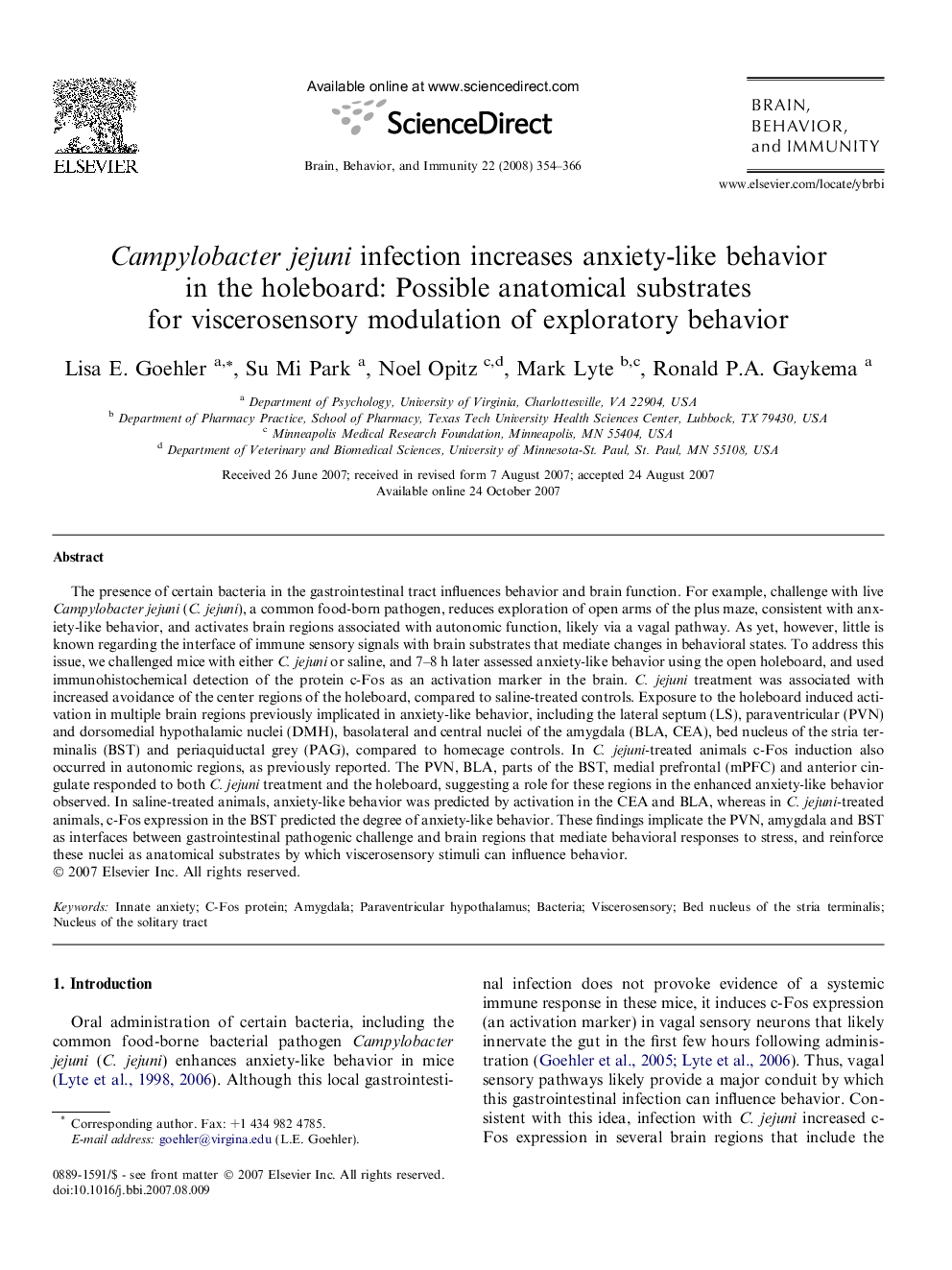| کد مقاله | کد نشریه | سال انتشار | مقاله انگلیسی | نسخه تمام متن |
|---|---|---|---|---|
| 923234 | 921075 | 2008 | 13 صفحه PDF | دانلود رایگان |

The presence of certain bacteria in the gastrointestinal tract influences behavior and brain function. For example, challenge with live Campylobacter jejuni (C. jejuni), a common food-born pathogen, reduces exploration of open arms of the plus maze, consistent with anxiety-like behavior, and activates brain regions associated with autonomic function, likely via a vagal pathway. As yet, however, little is known regarding the interface of immune sensory signals with brain substrates that mediate changes in behavioral states. To address this issue, we challenged mice with either C. jejuni or saline, and 7–8 h later assessed anxiety-like behavior using the open holeboard, and used immunohistochemical detection of the protein c-Fos as an activation marker in the brain. C. jejuni treatment was associated with increased avoidance of the center regions of the holeboard, compared to saline-treated controls. Exposure to the holeboard induced activation in multiple brain regions previously implicated in anxiety-like behavior, including the lateral septum (LS), paraventricular (PVN) and dorsomedial hypothalamic nuclei (DMH), basolateral and central nuclei of the amygdala (BLA, CEA), bed nucleus of the stria terminalis (BST) and periaquiductal grey (PAG), compared to homecage controls. In C. jejuni-treated animals c-Fos induction also occurred in autonomic regions, as previously reported. The PVN, BLA, parts of the BST, medial prefrontal (mPFC) and anterior cingulate responded to both C. jejuni treatment and the holeboard, suggesting a role for these regions in the enhanced anxiety-like behavior observed. In saline-treated animals, anxiety-like behavior was predicted by activation in the CEA and BLA, whereas in C. jejuni-treated animals, c-Fos expression in the BST predicted the degree of anxiety-like behavior. These findings implicate the PVN, amygdala and BST as interfaces between gastrointestinal pathogenic challenge and brain regions that mediate behavioral responses to stress, and reinforce these nuclei as anatomical substrates by which viscerosensory stimuli can influence behavior.
Journal: Brain, Behavior, and Immunity - Volume 22, Issue 3, March 2008, Pages 354–366